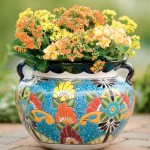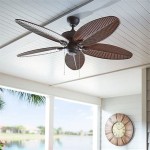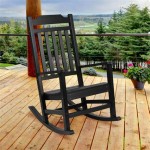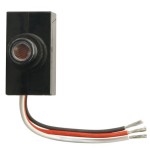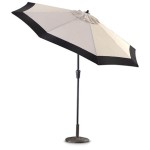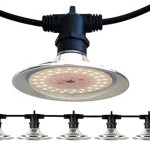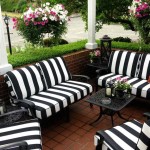Elevating Outdoor Spaces: Decor Ideas for Walls
Outdoor walls, often overlooked in landscape design, offer a prime canvas for extending the aesthetic appeal of a home. Integrating thoughtful decor elements transforms these surfaces from mere boundaries into focal points, enriching the overall outdoor experience. The selection of appropriate decor involves careful consideration of several factors, including the architectural style of the property, the surrounding environment, and the intended use of the outdoor space. This article will explore various decor ideas for outdoor walls, providing insights into materials, styles, and practical considerations to create visually appealing and durable outdoor environments.
Integrating Vertical Gardens and Living Walls
One increasingly popular approach to outdoor wall decor is the integration of vertical gardens and living walls. These installations involve cultivating plants directly on the wall surface, creating a dynamic and visually striking element. Vertical gardens can range from simple arrangements of potted plants hung on a wall to complex systems that incorporate irrigation and drainage. The selection of plants for a vertical garden should be based on the local climate, the amount of sunlight the wall receives, and the desired aesthetic. Succulents, ferns, and various flowering plants are commonly used in vertical gardens due to their adaptability and visual appeal. The benefits of incorporating vertical gardens extend beyond aesthetics; they also contribute to improved air quality, reduced ambient temperature, and enhanced biodiversity.
Living walls, a more advanced form of vertical gardening, typically involve pre-fabricated panels or modules that are attached to the wall. These panels contain pockets or cells for planting, along with integrated irrigation systems to ensure consistent moisture levels. Living walls can be customized to create intricate designs and patterns, offering a wide range of possibilities for creative expression. The installation of living walls often requires professional expertise to ensure proper structural support, irrigation, and maintenance. The long-term success of a living wall depends on regular pruning, fertilization, and pest control. However, the visual impact and environmental benefits of a well-maintained living wall can be significant, transforming an ordinary wall into a vibrant, living artwork.
Considerations for installing vertical gardens or living walls include the structural integrity of the wall, the availability of water and drainage, and the potential for pest infestations. Walls must be able to support the added weight of the plants and soil. A proper drainage system is crucial to prevent water damage to the wall and surrounding areas. Regular maintenance is essential to prevent the spread of pests and diseases. Additionally, the selection of plant species should be carefully considered to ensure compatibility and sustainability within the specific environment.
Utilizing Weather-Resistant Art and Sculptures
Another effective method for decorating outdoor walls is the incorporation of weather-resistant art and sculptures. These elements can add personality and visual interest to the outdoor space, reflecting the homeowner's taste and style. The selection of art and sculptures for outdoor use should prioritize materials that can withstand exposure to the elements, such as rain, sunlight, and temperature fluctuations. Common materials for outdoor art include metal, stone, concrete, and resin-based composites.
Metal sculptures, particularly those made from stainless steel or powder-coated aluminum, are highly durable and resistant to corrosion. These materials can withstand harsh weather conditions and maintain their appearance over time. Stone sculptures, crafted from materials such as granite or marble, offer a classic and timeless aesthetic. While stone is inherently weather-resistant, it is important to consider the potential for staining or discoloration over time. Concrete sculptures provide a versatile option, as they can be molded into various shapes and sizes. Concrete can also be stained or painted to achieve different colors and textures. Resin-based composites offer a lightweight and durable alternative to traditional materials. These composites can be molded to resemble stone, metal, or wood, providing a wide range of design possibilities.
When selecting art and sculptures for outdoor walls, it is important to consider the scale and proportion of the piece in relation to the wall and the surrounding environment. A large, imposing sculpture may be appropriate for a large, blank wall, while smaller, more delicate pieces may be better suited for smaller walls or accent areas. The style of the art should also complement the architectural style of the property and the overall aesthetic of the outdoor space. Abstract sculptures can add a contemporary touch, while figurative sculptures can create a more traditional and classical feel. The placement of the art should be carefully considered to maximize its visual impact and minimize the risk of damage from weather or accidental contact.
Securing outdoor art and sculptures to the wall is crucial to prevent them from falling or being damaged by wind. Heavier pieces may require professional installation to ensure proper support and stability. Lighter pieces can be attached using appropriate mounting hardware, such as screws, hooks, or adhesives. Regular cleaning and maintenance are essential to preserve the appearance of outdoor art and sculptures. Metal pieces should be periodically cleaned to remove dirt and grime, while stone pieces may require sealing to prevent staining. Resin-based composites can be cleaned with mild soap and water.
Implementing Decorative Lighting Fixtures
Decorative lighting fixtures provide both functional illumination and aesthetic enhancement for outdoor walls. Strategically placed lighting can highlight architectural features, create ambiance, and improve safety and security. The selection of lighting fixtures for outdoor walls should consider factors such as energy efficiency, durability, and style. LED lighting is a popular choice for outdoor applications due to its energy efficiency, long lifespan, and ability to produce a variety of colors and intensities.
Wall sconces are a classic and versatile option for outdoor wall lighting. These fixtures can be mounted on either side of a doorway, along a walkway, or on any other wall surface. Wall sconces come in a wide range of styles, from traditional to contemporary, and can be used to create different lighting effects. Uplighting involves mounting fixtures at ground level to illuminate the wall from below. This technique can highlight architectural details and create a dramatic effect. Downlighting involves mounting fixtures above the wall to cast light downward. This technique is useful for illuminating pathways and providing security lighting. String lights offer a festive and whimsical option for decorating outdoor walls. These lights can be strung along a fence, draped across a pergola, or hung from tree branches. String lights are available in a variety of colors and styles, and can be used to create a warm and inviting atmosphere.
When selecting lighting fixtures for outdoor walls, it is important to consider the IP (Ingress Protection) rating. The IP rating indicates the level of protection the fixture offers against dust and water. For outdoor applications, a minimum IP rating of IP44 is recommended, which provides protection against splashing water. Fixtures with higher IP ratings, such as IP65 or IP67, offer greater protection against water and dust, making them suitable for more exposed locations. The placement of lighting fixtures should be carefully considered to maximize their effectiveness and minimize light pollution. Fixtures should be positioned to illuminate pathways and entrances, highlight architectural features, and create a safe and inviting outdoor environment.
Wiring and installing outdoor lighting fixtures should be done by a qualified electrician to ensure safety and code compliance. The use of weatherproof wiring and connectors is essential to prevent electrical hazards. Regular maintenance of outdoor lighting fixtures is necessary to ensure proper operation and longevity. Bulbs should be replaced as needed, and fixtures should be cleaned periodically to remove dirt and debris. Control systems, such as timers and motion sensors, can be used to automate the operation of outdoor lighting and conserve energy.
In addition to these primary decor ideas, several other options can enhance outdoor walls. Mirrors can create the illusion of more space and reflect light, brightening up dark areas. Decorative screens, made from materials such as wood, metal, or bamboo, can add privacy and visual interest. Planters, whether hung on the wall or placed at its base, can introduce greenery and color. Choosing decor that reflects personal style and complements the surrounding environment is key to creating a welcoming and aesthetically pleasing outdoor space. Ultimately, careful planning and execution can transform ordinary outdoor walls into stunning features that enhance the overall enjoyment of the home.

Bring Life To Outdoor Walls With Nature S Green

Smashing Outdoor Wall Decor Ideas That Will Add Value To Your Home

Outdoor Decor Ideas The Home

28 Best Outdoor Wall Decor 2024 Hgtv

5 Spectacular Outdoor Wall Decor Ideas That You Ll Love

Garden Decoration Ideas I Tiles Diy

6 Outdoor Wall Decor Ideas You Need To Try

Outdoor Wall Decor Ideas Modern Artycraftz Online Shopping Site For Home Gifting Lifestyle And Luxury

100 Outdoor Wall Decoration Ideas 2025 Garden Decor Backyard

Outdoor Wall Décor For Maryland And Dc Homes Winthorpe Design Build

